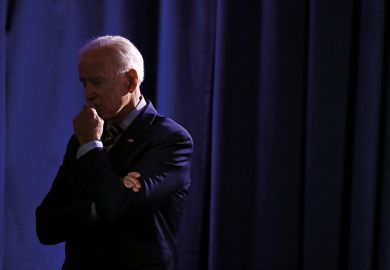Even as they raise sticker prices, major US universities are losing tuition revenue for the first time in more than a decade, mainly because of coronavirus and the nation’s shrinking enrolment.
The problem is especially pronounced at non-profit private institutions, where median net tuition revenue is expected to contract by 3.3 per cent this academic year, Moody’s Investors Service found in an annual survey.
The decline is 0.9 per cent at public institutions, marking the first contraction in both major divisions of higher education since Moody’s, the global credit ratings agency, began its institutional surveys in 2009.
Moody’s estimates are based on responses from more than 300 universities, covering the vast majority of US students. If nationally unrepresentative at all, its conclusions may be even more optimistic than US higher education overall, given the generally healthier condition of institutions that Moody’s tracks.
The Moody’s report follows the annual College Board survey showing that both public and private two-year and four-year institutions raised their baseline tuition rates this academic year even though most classes were offered online.
Taken together, experts said, the two sets of surveys affirm a picture of US higher education in deep financial stress as the pandemic’s economic damage piles on top of sagging demographics and mounting student debt woes.
“Colleges are facing dramatic losses in revenue from tuition and from room and board, in addition to a lot of increased expenditure,” said Sandy Baum, a higher education expert at the Urban Institute.
The financial crunch has long appeared most dire among non-elite privates. The Moody’s data fit that understanding, showing losses in net tuition revenue as greatest at the smallest private institutions.
Public institutions, by contrast – which educate the vast majority of US college students – have seen stable if modest gains in government support in recent years, allowing many to avoid large swings in tuition.
The College Board report covers nearly 4,000 accredited institutions. It found that the average published tuition rate for in-state students at four-year public institutions was $10,560 (£8,165), up 1.1 per cent from last year. For their out-of-state students, it was $27,020, up 0.9 per cent.
Four-year private non-profit institutions, meanwhile, are charging an average of $37,650, up 2.1 per cent, the College Board found.
Those numbers, however, are their official tuition rates. On average, Moody’s found, private colleges are giving their first-year students a median discount of 42 per cent, up from 37 per cent five years ago, with the smallest privates cutting their prices the most.
Much of the problem comes down to the nation’s ongoing decline in population at the high school level, compounded during the pandemic by students either unable or unwilling to attend in mostly or fully online formats.
This year’s freshman enrolment is down 14 per cent at public four-year institutions and down 12 per cent at four-year private nonprofits, the National Student Clearinghouse Research Center said in a preliminary report earlier this month.
US colleges and universities estimate the pandemic has cost them about a fifth of the $650 billion they spend each year, due to lost revenues and higher expenses.
Some students have nevertheless been protesting and suing colleges to get tuition lowered even more, because of the perceived lower value of online classes.
So far, however, colleges have maintained tight enough control over the comparative pricing information that students would need to hurt them even more by making market-based decisions about their choices, said analyst Beth Akers of the Manhattan Institute.
Because of rampant discounting of sticker prices, Dr Akers said, “aspiring students won’t know how much a particular college will cost them until they apply and get accepted, sometimes many months later”.
“And on top of that, even after they’ve started paying the bills,” she said, “surveys show that students often aren’t aware of how much they are paying or even how much they are borrowing.”
Register to continue
Why register?
- Registration is free and only takes a moment
- Once registered, you can read 3 articles a month
- Sign up for our newsletter
Subscribe
Or subscribe for unlimited access to:
- Unlimited access to news, views, insights & reviews
- Digital editions
- Digital access to THE’s university and college rankings analysis
Already registered or a current subscriber?








